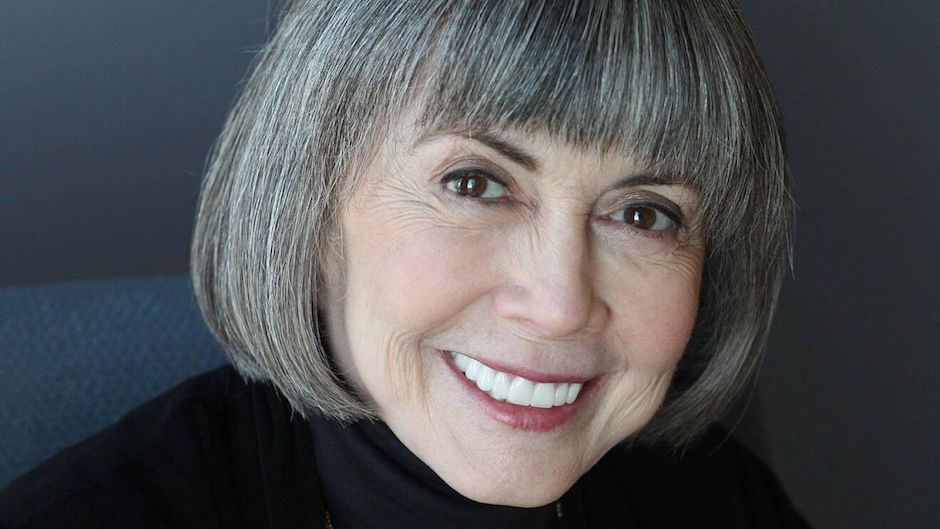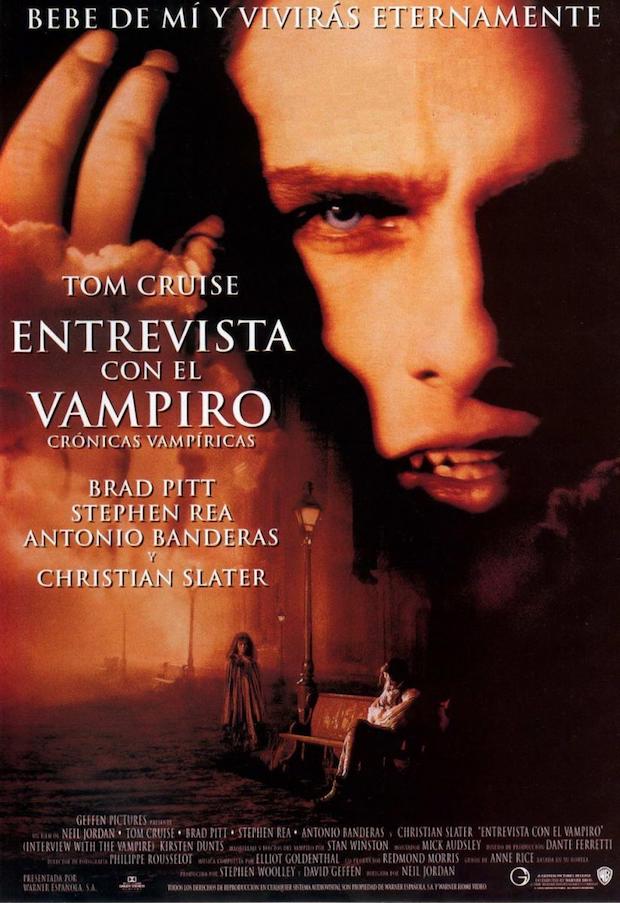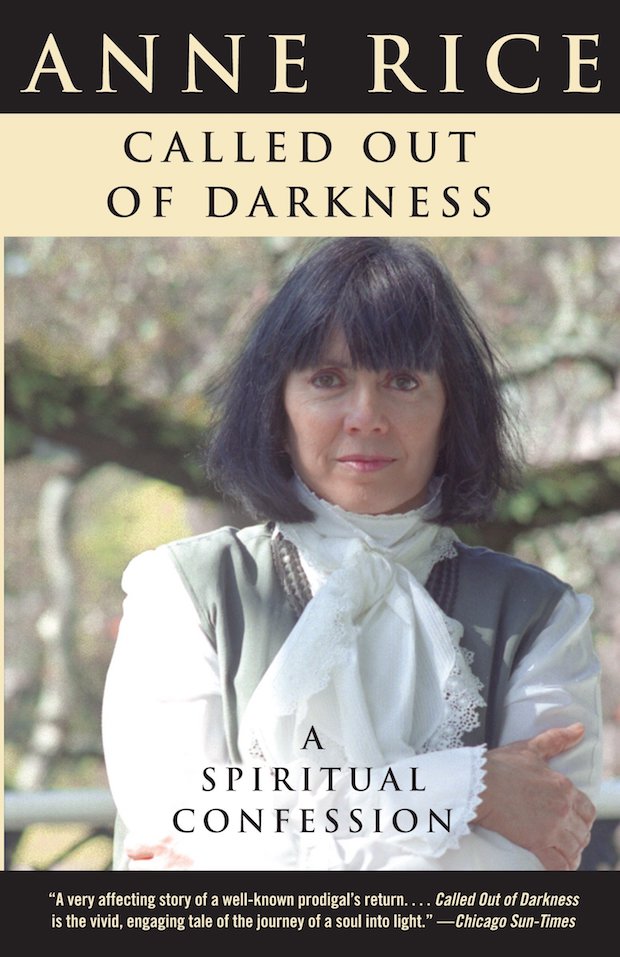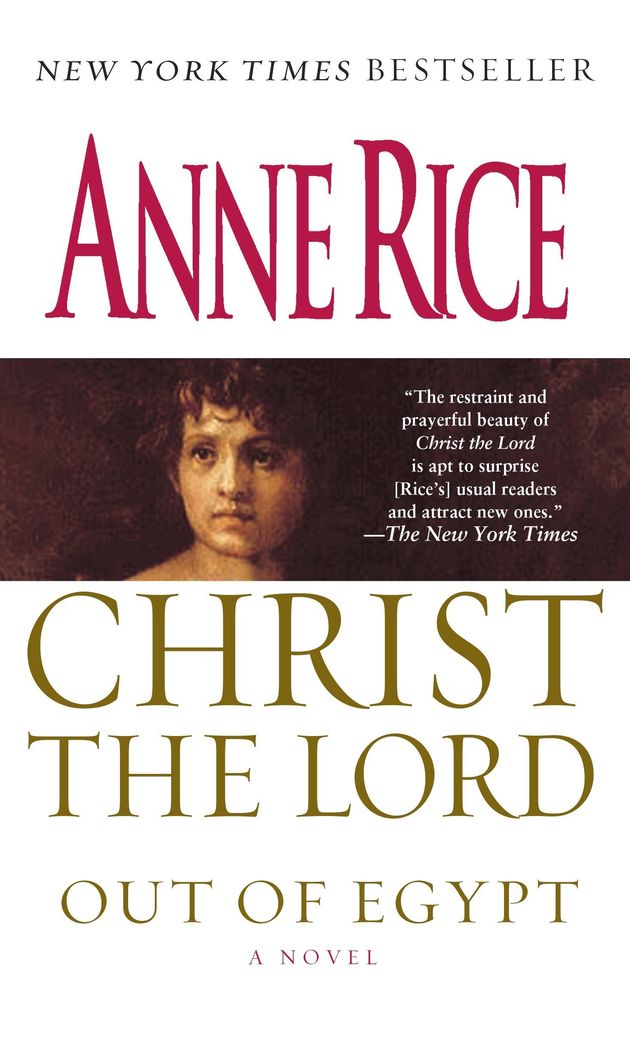Her fascination with Jesus fills us with hope. As Kafka said, Jesus is “an abyss of light. You must close your eyes so as not to fall into it”.
 The vampire queen, Anne Rice, was fascinated by Jesus as the light of the world.
The vampire queen, Anne Rice, was fascinated by Jesus as the light of the world.
What was it that aroused such a fascination with Jesus – the light of the world – in the “vampire queen “, Anne Rice? The author of the Christ the Lord trilogy, died in December at the age of 80 of a brain haemorrhage.
This horror story author discovered Jesus as “the ultimate supernatural hero”, despite appearing to turn her back on Christianity in 2010, when she announced that she could no longer consider herself a Christian saying, “I refuse to be anti-gay. I refuse to be anti-feminist. I refuse to be anti-artificial birth control”.
Rice had returned to her childhood faith, the Irish Catholicism in which she had been raised in the 1940s and 50s. When she published Christ the Lord: Out of Egypt in 2005 she said: “I think he [Jesus] want me to tell his story”.
With the fervour of a convert, the header of her website was changed to cite Saint Augustin: “But we, O Lord, are Your little flock. Possess us as Yours. Stretch Your wings over us and let us fly under them. Be our glory”.
From there she directed those interested in the Catholic faith to the website of a religious TV channel, even though she continued plug the annual vampire ball in New Orleans.
“This book seeks to present a realistic fictional portrait of Our Lord in Time”, she said. In the introduction she also explained that the book “is rooted in the faith that the Creator of the Universe became human in the person of Jesus Christ and ‘dwelt among us.’”, citing John 1:14. In that sense, “the magnificent mystery of the Incarnation is accepted and affirmed as fact”.
Her sources are “ History as well as the gospels” for “this picture of a world in which Our Lord might have lived, as a little boy, in war and in peace, from day to day”. She ends the prologue with the Latin expression Ad majorem Dei gloriam – dedicating her work to “the greater glory of God”.

She was born Howard Allen Frances O’Brien in 1941. Her father worked for the US Postal Service, but he also wrote stories and made sculptures. Her mother died when she was 15. She went to mass and communion every day and wanted to be a nun as women couldn’t be priests.
As a girl, Anne played in the streets of New Orleans. Around her, moss-covered knotty oaks guarded the ruins of mansion inhabited by the ghosts of her stories.
Grasping her father’s hand she visited the crypts in the Lafayette cemetery, running her fingers along the names of those who died of yellow fever. Her mind was already spinning yarns, as her thoughts filled her beautiful surroundings with images of voodoo and shadows hiding from the light.
She abandoned Catholicism at the age of 18, when she stopped believing it was “the one true church established by Christ to give grace”. This happened when she was at university where she remembers there being “an intense sexual pressure”, but also memorable personalities and books by existential authors like Sartre and Camus.
When Rice left home in 1959 to go to university in Texas, she found that the rigid doctrine of the Church jarred with the growing complexities of her new life: “My background was so sheltered it didn’t seem to sit with the modern world. I felt I had to deal with my faith and reconcile it with the world around me. My childhood was very sex-obsessed and repressed. I felt when I accepted a world without God, I accepted reality, and stopped believing in illusion”.

[photo_footer]The novel, Rice says, reflects her feeling of guilt and misery in being cut off from God and from salvation, lost in a world without light.[/photo_footer]
Two years later, in 1961, she married a “passionate atheist”, the poet and artist Stan Rice, “who not only didn’t believe in God, he felt he had had something akin to a vision which had given him a certainty that God didn’t exist”.
Her husband got a job at San Francisco State University, where he would go on to chair the creative writing department. They moved to Haight-Ashbury, where they were surrounded by hippies on acid.
The couple was dealt a massive blow when their daughter Michele, born in 1966, died of leukaemia aged 5. Overwhelmed by grief, Anne sat down and started to write. She says that five hazy weeks later she finished the first draft of Interview with the Vampire.
Her novel was published in 1976 and adapted to cinema in 1994 by Neil Jordan, in a film starring Tom Cruise and Brad Pitt. The novel, she said, reflected “my guilt and my misery in being cut off from God and from salvation; my being lost in a world without light”.
Her book was set in nineteenth-century New Orleans, a city where she no longer lived. Her main character is Lestat, a vampire of ambiguous sexual inclination, who has become something of a homo-erotic cult figure.
This was the beginning of her Vampire Chronicles. Later, under the pseudonyms A. N. Roquelaure and Anne Rampling, she would write a series about witches and an erotic trilogy, which ranged from sadomasochism to more explicit pornography.
Her bibliography might be seen as somewhat unusual for someone who later sold books in religious centres.
As an author, Anne Rice has always been fascinated with history. In 1993 she was struck by a mystery that is difficult to explain: the survival of the Jews.
This brought her back into contact with God. In 1998, she returned to the Catholic Church but, according to a note at the end of Christ the Lord: Out of Egypt: “even then I had not closed in on the question of Jesus Christ and Christianity”.
She started reading the Bible, especially during bouts of depression, choosing literary translations of the New Testaments. But it was in 2002, at the death of her husband, that Anne committed herself to Christ.

[photo_footer]Following the death of her atheist husband, Anne became a Christian in 2002. [/photo_footer]
When you read this novel, you expect to find a Jesus that is closer to the criticism of the gospels than to the story of the Bible. But this is not the case. In fact, Anne Rice goes even further.
Not only is Jesus born in Bethlehem, something that many theologians dispute nowadays, but in line with her Catholic education, Mary remains a virgin. Rice realized that she had previously “taken in a lot of fashionable notions about Jesus—that he’d been oversold, that the Gospels were ‘late’ documents, that we really didn’t know anything about him”.
When she started studying the subject further, she delved into critical studies of the New Testament. “I expected to discover that their arguments would be frighteningly strong, and that Christianity was, at heart, a kind of fraud”.
However, she observed how “these sceptical scholars seemed so very sure of themselves,” but “they built their books on certain assertions without even examining these assertions”.
Rice discovered that “ many of the sceptical arguments – arguments that insisted most of the Gospels were suspect, for instance, or written too late to be eyewitness accounts” were “conjecture” and “assumptions piled upon assumptions”.
She thus reached the conclusion that the gospels were written before the fall of Jerusalem, in the year 70 after Christ. In this she was guided by some Evangelical authors, such as Bauckham, Hurtado, Blomberg, Carson, Morris and Wright, but also by other specialists like Robinson, Hengel and Jeremias.
Her books highlight the conflict that was prevalent at that time, characterized by recurring violent revolts, and the fact that the Judaism of the time was much more Hellenized than we might imagine.
This explains why many would be surprised by her character’s generalized use of Greek, but it is true that discoveries such as those of the city of Sepphoris indeed suggest that Greek was more common than previously thought.
Rice was aware that some people might not take her very seriously, believing that she had fallen into some kind of mysticism and gone mad. “People perceive that I’m putting my whole career at risk”, she said, but “I don’t care if my books don’t sell”.
Contrary to her expectations, her story about Jesus soon became a best seller, although this is something that shouldn’t come as a surprise in a country like the United States, where nine in ten people say that they believe in God. “I expected to be diminished and ignored, but I never expected to be embraced”.
Although it is dangerous to speculate about Jesus’s life, it is with respect and reverence that Anne Rice takes up certain questions that Christians have been asking themselves for centuries: How did Jesus experience being both God and man? What kind of self-awareness did he have?
Did he keep any part of his omniscience? Did he perform any miracles before his baptism? In terms of our faith, we don’t need to know the answers to these questions – otherwise we would find them in Scripture – but they are nevertheless the kind of questions that we asks ourselves at some point.
Many people will be surprised by Rice’s use of apocryphal sources about Jesus’s childhood in the first pages of Christ our Lord. The author explains herself at the end of the book.
She says that “They were fanciful, some of them humorous, extreme to be sure, but they had lived on into the Middle Ages, and beyond”. She decided to “embrace this material, to enclose it within the canonical framework as best I could. I felt there was a deep truth in it, and I wanted to preserve that truth as it spoke to me”, although she admits that “of course that is an assumption”.
I think that it would be unfair to throw all her work out on account of these pages.

[photo_footer]The author of the trilogy Christ our Lord, recently passed away at the age of 80. [/photo_footer]
I think that this is a work of faith by a person who tries to honour God with her gifts. She bases her work on the Gospels and says that the believes that Jesus is who he says he is.
She tries to be “true to Paul when he said that Our Lord emptied himself for us”, but she understands this in terms of his “Divine awareness”.
It is true that Christ had a human intelligence. There are things that he did not know, such as when he would go back to His Father (Matthew 24:36), given that his human nature was no more omniscient than it was omnipotent or omnipresent.
He depended on God’s revelation, whether that was in a general way through creation and providence, or in a specific way through scripture and prophecy, which he also received directly as the mediator.
But He was truly God and truly man. So we shouldn’t try too hard to separate or mix his two natures.
I don’t know if this is “a conversion story on the level of Augustine”, as the columnist David Kuo, adviser to President Bush and Deputy Director of the White House’s Office of Faith-Based and Community Initiatives, described it.
But he may have been right when he said:
“Anne Rice was a daughter of darkness. Rice sold [millions of] books that explored the darkest realms of the spiritual world,” writing in an online column for beliefnet.com. “She dressed all in black. She glorified the night and her atheism. But look at pictures of her now.... Look most of all at the sparkle in the eyes – at the light. It isn’t the Bible, but it is inspired by God”.
The thing is that Augustin renounced his past life. Rice did not renege on her career. Reflecting on her book Interview with the Vampire, she saw “potentially redemptive issues”.
The book was adapted for the musical Lestat, that Elton John presented a few days after exchanging vows with his long-time partner in London. She thought that this was marvellous as she considers herself “socially liberal”.
She was accordingly very proud of her son, Christopher Rice, who is an author and gay rights activist in Hollywooda.
She did not end up being the conservative Catholic that some people had hoped for. She was in favour of gay marriage, abortion and birth control, even though her home took on an increasingly monastic air, with saints on pedestals lifting their arms to the sun as it entered the windows of her house, looking out over the Pacific.
However, her fascination with the person of Jesus fills us with hope. Kafka said that Jesus is “an abyss of light. You must close your eyes so as not to fall into it”.
Given that he is above any church or denomination, the question is : how can we know Jesus? It is obviously not through novels such as these, but through the historical witness of the gospels.
As Rice, we must follow the advice that Jesus himself gave: “You study the Scriptures diligently because you think that in them you have eternal life. These are the very Scriptures that testify about me” (John 5:39).

Las opiniones vertidas por nuestros colaboradores se realizan a nivel personal, pudiendo coincidir o no con la postura de la dirección de Protestante Digital.
Si quieres comentar o